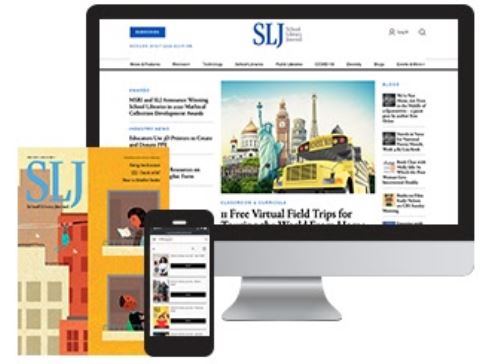Understanding—and Teaching—the Five Kinds of Nonfiction
In the last 25 years, informational books for young readers have undergone exciting and dramatic changes, evolving into five distinct categories. Nonfiction author Melissa Stewart lays out the distinctions, offers book recommendations, and suggests an activity for young readers.

Even though some children’s nonfiction books cross categories, these five general groupings
can help students make sense of the wide world of nonfiction and all it has to offer.
Traditional Nonfiction
Not long ago, there was just one kind of nonfiction for children—survey (aka "all-about") books that provide a general overview of a topic. These traditional nonfiction titles, often published in large series, emphasize balance and breadth of coverage and feature language that is clear, concise, and straightforward. They have an expository writing style that explains, describes, or informs and typically employ a description text structure. For example: About Fish: A Guide for Children by Cathryn Sill and John Sill (Peachtree, 2017) Transportation! by Gail Gibbons (Holiday House, 2017) Water by Seymour Simon (HarperCollins, 2017)Browsable Nonfiction
Thanks to Dorling Kindersley’s (DK) innovative "Eyewitness Books," the early 1990s brought remarkable changes to expository nonfiction. These beautifully designed, lavishly illustrated books with short text blocks and extended captions revolutionized children’s nonfiction by giving fact-loving kids a fresh, engaging way to access information. Readers can easily dip in and out, focusing on the content that interests them most, or they can read the books cover to cover. Today, many companies publish fact-tastic books in this category. For example: 1,000 Facts About the White House by Sarah Wassner Flynn (National Geographic Kids, 2017) Eyewitness Books: Soccer by Dorling Kindersley (DK, 2018) Guinness Book of World Records 2018 by Guinness World Records (Guinness World Records, 2017)Narrative Nonfiction
In the mid-1990s, children’s authors began crafting narrative nonfiction—prose that tells a true story or conveys an experience. This style of writing appeals to fiction lovers because it includes real characters and settings; narrative scenes; and, ideally, a narrative arc with rising tension, a climax, and denouement. The scenes, which give readers an intimate look at the world and people being described, are linked by transitional text that provides necessary background while condensing parts of the true story that aren’t relevant to the author’s purpose. Although narrative nonfiction may have an in medias res opening, it generally features a chronological sequence text structure and is ideally suited for biographies and books that recount historical events. Dazzle Ships: World War I and the Art of Confusion by Chris Barton and illustrated by Victo Ngai (Millbrook, 2017) The World Is Not a Rectangle: A Portrait of Architect Zaha Hadid by Jeanette Winter (S. & S./Beach Lane, 2017) Vincent and Theo: The Van Gogh Brothers by Deborah Heiligman (Holt, 2017)Expository Literature
When Congress passed the No Child Left Behind Act of 2001, school funding priorities suddenly shifted. School library budgets were slashed, and many school librarians lost their jobs. Around the same time, a proliferation of websites made straightforward, kid-friendly information widely available without cost, which meant traditional survey books were no longer mandatory purchases for libraries. As nonfiction book sales to schools and libraries slumped, authors began searching for ways to add value to their work, so they could compete with the internet. The result has been a new breed of finely crafted expository literature that delights as well as informs. Unlike traditional nonfiction, expository literature presents narrowly focused topics, such as STEM concepts and processes, in creative ways that reflect the author’s passion for the subject. These books typically feature an innovative format and carefully chosen text structure, a strong voice, and rich, engaging language. A Hundred Billion Trillion Stars by Seth Fishman and illustrated by Isabel Greenberg (HarperCollins/Greenwillow, 2017) Look at Me! How to Attract Attention in the Animal World by Steve Jenkins and Robin Page (HMH, 2018) A Beetle Is Shy by Dianna Aston Hutts and illustrated by Sylvia Long (Chronicle, 2016)Active Nonfiction
Inspired by the maker movement, publishers have recently begun creating what booksellers call “active nonfiction”—browsable books that are highly interactive and/or teach skills readers can use to engage in an activity. Written with an expository writing style, these how-to guides, cookbooks, field guides, craft books, and more are becoming increasingly popular with young readers. Minecraft: Guide to Exploration by Mojang Ab and the Official Minecraft Team (Del Rey, 2017) Stitch Camp: 18 Crafty Projects for Kids & Tweens by Nicole Blum and Catherine Newman (Storey, 2017) Try This Extreme: 50 Fun & Safe Experiments for the Mad Scientist in You by Karen Romano Young (National Geographic, 2017)A New Way of Thinking
Take a moment to evaluate your classroom or library book collection. Do you have enough nonfiction titles? Experts recommend a 50-50 mix of fiction and nonfiction. How diverse is your nonfiction section? Does it include a healthy selection of books from all five categories—narrative, expository literature, traditional, browsable, and active? Now think about your instruction. Do you have a natural tendency to focus your reading and writing lessons around fiction? When you select informational books for read-alouds, book talks, or mentor texts in writing workshop, do you usually choose narrative nonfiction? If you find yourself favoring fiction and narrative nonfiction, you aren’t alone. Most people who choose to be children’s librarians and literacy educators value and connect strongly with stories and storytelling. And it’s natural for them to assume that young readers feel the same way. But this is a bias we must recognize and address. Research clearly shows that many students (up to 75 percent, in some studies*) enjoy expository writing as much as or more than narratives. And some children have a strong preference for expository nonfiction. Because these fact-loving kids are more interested in data, statistics, ideas, and information than in making an emotional connection with the central figure in a book, they will only thrive as readers if they are given access to a rich, diverse selection of expository nonfiction. Let’s celebrate all the different kinds of nonfiction and the kids who love it.ACTIVITY
Introducing the Five Kinds of Nonfiction to Students Grades 3–8 Organize students into small groups and invite each team to gather a variety of nonfiction books on a single topic from the school library. After the children have sorted the books into at least three categories that make sense to them, compare the criteria each group used. Next, share books on the same topic that fit into each of the five categories. After reading aloud sections of each book, ask students to compare how the books present information.- Is the focus broad or narrow?
- What kind of text features does each book include?
- What kind of text structure, writing style, and craft moves does the author employ?
- Does the writing have a distinct voice?
- What similarities and differences do students notice across the categories?
- Caswell, Linda J. and Nell K. Duke. “Non-Narrative as a Catalyst for Literacy Development.” Language Arts, 1998, p. 108-117.
- Hynes, Myrna. “‘I Read for Facts’: Reading Nonfiction in a Fictional World.” Language Arts, 2000, p. 485-495.
- Mohr, Kathleen A. J. “Children’s Choices for Recreational Reading: A Three-Part Investigation of Selection Preferences, Rationales, and Processes.” Journal of Literacy Research, 2006, p. 81-104.
- Repanskey, Lisa L., Jeanne Schumm, and Jacqueline Johnson. “First and Fourth Grade Boys’ and Girls’ Preferences for and Perceptions about Narrative and Expository Text.” Reading Psychology, 2017, p. 1-40.
RELATED
BOOKS
PREMIUM
Babies at the Zoo
BOOKS
PREMIUM
Construction
NONFICTION
PREMIUM
Hooray for My Brain!
RECOMMENDED
CAREERS
The job outlook in 2030: Librarians will be in demand
CAREERS
The job outlook in 2030: Librarians will be in demand
ALREADY A SUBSCRIBER? LOG IN
We are currently offering this content for free. Sign up now to activate your personal profile, where you can save articles for future viewing






Add Comment :-
Comment Policy:
Comment should not be empty !!!
Barbara Birenbaum
Now I know the most recent books I have authored for Grades 2-5 are Expository Nonfiction. Now maybe these two award winning groundhog books (Groundhog Willie's Shadow and Groundhogs Across America- Peartree, Clearwater, FL (http://www.p;eartree-books.com) can emerge from their burrows and find a home with readers. Simple, clear explanation(s) that the books publishing industry also needs to know. Thanks! Barbara Birenbaum, Authorand ComposerPosted : Apr 13, 2018 03:14
Debra Schneider
My staff and I studied this and the JLG webinar Melissa did on the same subject. Everyone agrees we learned a lot and are thinking about our nonfiction and collection development in new ways.Posted : Apr 12, 2018 05:18
Maria Gianferrari
This is the perfect way to think about nonfiction: its origins, and how it's evolving. Thank you for championing nonfiction, Melissa!Posted : Apr 12, 2018 01:05
Rhyl Bignell
Excellent explanation will share this at school. Where do books that have a narrative story then a factual paragraph fit in? Australian author Claire Saxby's Koala is an example of this.Posted : Apr 07, 2018 04:53
Padma Venkatraman
Lucid and informative article just like so many of your blog posts. If you're a reader with an interest in nonfiction, I recommend you follow Melissa's blog.Posted : Apr 07, 2018 01:19
Alyssa Mito Pusey
Thanks for always thinking about nonfiction so clearly and critically, Melissa! The field of nonfiction is growing and changing in so many exciting ways right now, and your family tree helps me wrap my mind around it.Posted : Apr 06, 2018 08:16
Denise Nassetta
I appreciate the way this breaks down the types of non-fiction. I will use it as a librarian and share it with my teachers. Thank you.Posted : Apr 06, 2018 04:42
Gwendolyn Hooks
Everytime I read your work, I learn something new. Keep it up!Posted : Apr 05, 2018 04:54
Stephen Aitken
Thanks Melissa for such a clear and noteworthy article, and thanks to SLJ for making it available to educators and all of us who are passionate about non-fiction both as readers and authors.Posted : Apr 05, 2018 10:07